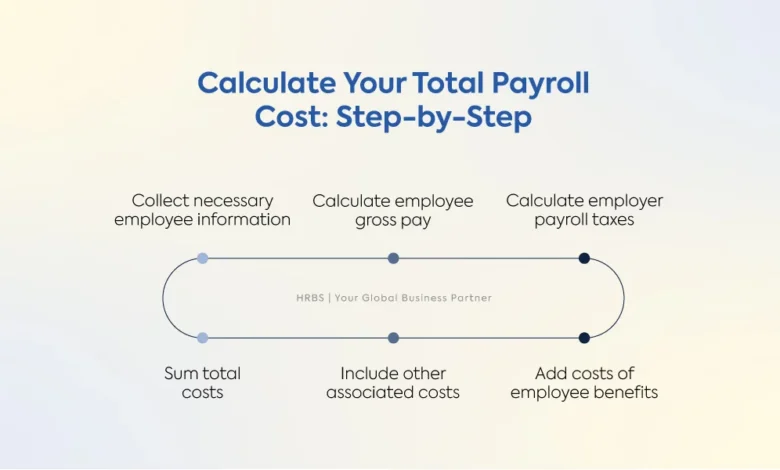Annual vs. Monthly Payroll Pricing: What’s Actually Cost-Effective

When choosing payroll software or outsourcing services, businesses often face a crucial decision: whether to pay monthly or annually. While it may seem like a minor choice, the payroll pricing structure you select can significantly impact your cash flow, budgeting strategy, and even your long-term relationship with the provider.
In this article, we’ll compare annual and monthly payroll pricing models, evaluate their cost-effectiveness, and help you make an informed decision that suits your business stage and financial goals.
The Basics: Understanding Monthly vs. Annual Payroll Plans
Monthly payroll pricing involves paying a fee every month—usually with no long-term commitment. These plans often include a base monthly charge and a per-employee or per-payroll-run fee.
Annual payroll pricing is typically billed upfront for the year and may come with a discounted rate compared to monthly billing. These plans usually still include per-employee or per-run fees, but they offer cost savings in exchange for a commitment.
Both models offer access to the same tools and features, but they differ in terms of flexibility, financial planning, and total cost.
The Case for Monthly Payroll Pricing
Monthly billing gives you flexibility. This is especially helpful for small businesses, startups, or seasonal companies that need to adjust their software usage based on growth or contraction.
Benefits of Monthly Plans:
- Lower upfront cost: You don’t need to commit a large chunk of your budget at once.
- Easier cancellation: If you’re unhappy with the service or need to pivot, you can switch providers without a major financial penalty.
- Better cash flow control: Monthly billing allows you to keep cash in hand for other pressing business needs.
- Scalability: As your team grows, you can reassess your provider’s value monthly and upgrade/downgrade accordingly.
However, this flexibility may come with trade-offs. Monthly plans usually cost more over the course of a year. Providers justify this premium by absorbing the risk of short-term customer churn.
The Case for Annual Payroll Pricing
Annual billing is about long-term commitment. If your business is stable and you’re confident about your payroll needs, annual plans offer predictable costs and often unlock discounted rates.
Benefits of Annual Plans:
- Cost savings: Providers usually offer a 10–30% discount for annual payments.
- Budget predictability: You know your payroll software cost for the entire year—no monthly surprises.
- Time savings: You don’t have to process monthly invoices or worry about recurring transactions.
- Relationship perks: Long-term customers may receive priority support, product updates, or other exclusive benefits.
Still, annual billing isn’t without risks. If your business changes dramatically—through downsizing, closure, or switching platforms—you may not get a refund or may face cancellation penalties.
Read Also: Mutf_In: Band_Busi_Cycl_1cnu9tl
Crunching the Numbers: Real-World Comparison
Let’s say you’re running a small business with 15 employees. You’ve found a payroll provider that charges:
- Monthly Plan: $45/month base + $6/employee
- Annual Plan: $40/month base + $5.50/employee (billed annually)
Monthly Plan Cost:
- $45 + (15 × $6) = $135/month
- $135 × 12 = $1,620/year
Annual Plan Cost:
- $40 + (15 × $5.50) = $122.50/month
- $122.50 × 12 = $1,470/year
Savings with Annual Billing: $150/year
This may not seem like a huge difference, but as your team grows or if you have multiple payroll systems (for different locations or subsidiaries), the savings can stack up. Larger enterprises may save thousands each year with annual billing.
Factors That Influence the Best Choice
There is no one-size-fits-all answer. Whether monthly or annual payroll pricing is more cost-effective depends on a variety of factors:
1. Business Stage
Startups or early-stage businesses may prefer monthly flexibility until revenue stabilizes. Established companies often benefit from locking in savings through annual plans.
2. Cash Flow
If you operate with tight cash flow, the lower monthly investment may be more manageable—even if it means paying a little more in the long run.
3. Growth Plans
Expecting to scale rapidly? A monthly plan gives you the ability to reassess needs and switch software if your provider can’t keep up.
4. Provider Trust
If you’re new to a payroll platform, it’s safer to go monthly at first. Once you’re confident in the service, switching to an annual plan makes more sense.
5. Support and Features
Some providers offer advanced features, integrations, or dedicated account managers only with annual plans. Consider what features are most important to your team.
Hybrid Options: The Best of Both Worlds?
Some payroll providers offer flexible hybrid pricing models. For example, you might commit annually to the base platform while paying monthly for the number of employees you run payroll for. This approach gives you both cost predictability and team-size flexibility.
Another option is to start monthly and then switch to an annual plan mid-year once you’re confident in the software’s performance. Be sure to ask if the provider allows prorated upgrades.
Don’t Ignore the Fine Print
Before you decide, closely examine:
- Cancellation policies
- Refund eligibility
- Upgrade/downgrade rules
- Support tiers
- Hidden fees for tax filings or off-cycle payrolls
A seemingly cheap monthly plan might end up costing more when you factor in support charges or limits on payroll runs.
So, What’s Actually Cost-Effective?
Monthly plans are ideal if:
- You’re a new or small business.
- You need short-term flexibility.
- You’re testing different providers.
Annual plans are cost-effective if:
- You’ve already vetted your provider.
- You want predictable expenses.
- You’re optimizing for long-term savings.
Ultimately, the most cost-effective choice is the one that aligns with your business’s financial health and growth plans. Don’t choose purely based on price—consider value, features, and future-proofing.
And remember, when evaluating payroll software, always look beyond the headline numbers. It’s not just about how much it costs—it’s about how much time, stress, and compliance risk it saves you.
So, when analyzing payroll pricing, think beyond dollars and cents. Think flexibility, growth, and peace of mind.
Final Thoughts
Choosing between monthly and annual payroll billing isn’t just a financial decision—it’s a strategic one. Whether you’re launching your first business or managing hundreds of employees, take the time to evaluate what structure supports your current needs and future ambitions. Pricing matters, but planning ahead matters more.






